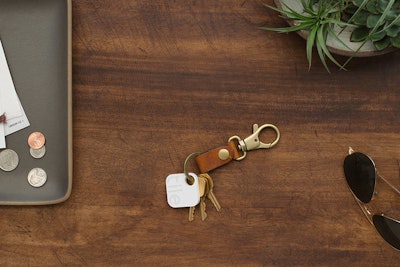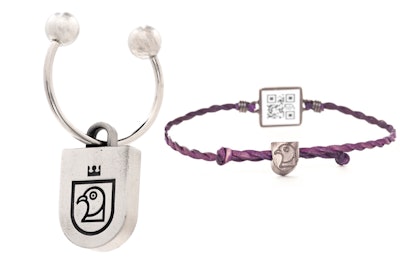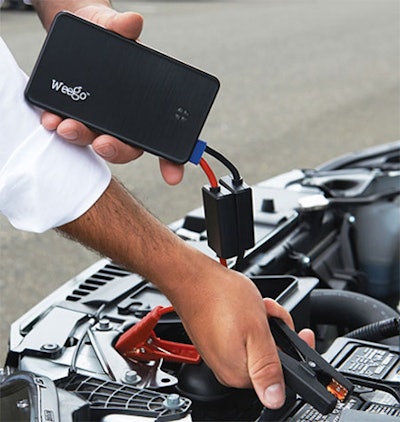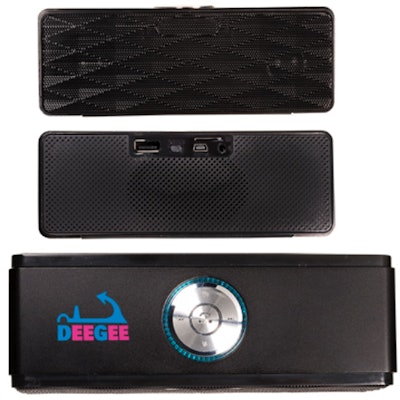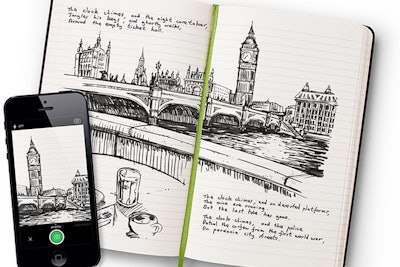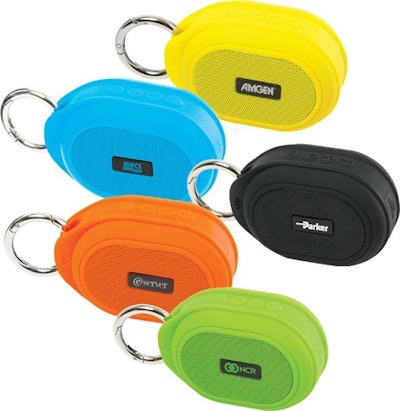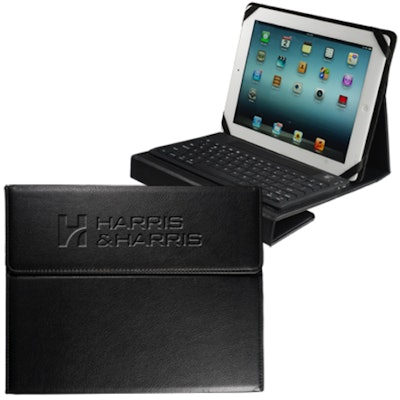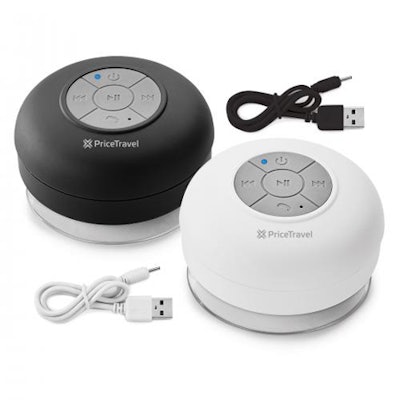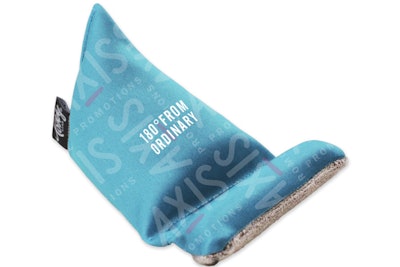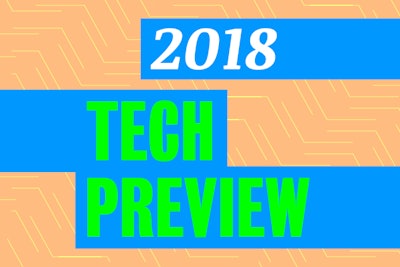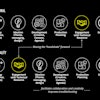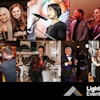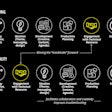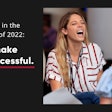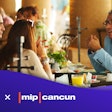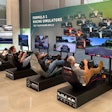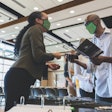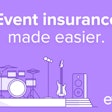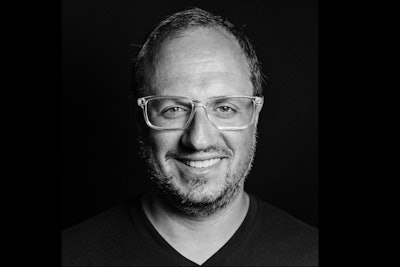

Comedian Larry Wilmore of Comedy Central’s The Nightly Show was the featured entertainer. He followed remarks by President Obama, who was attending his final White House Correspondents' Association Dinner as Commander-in-Chief.

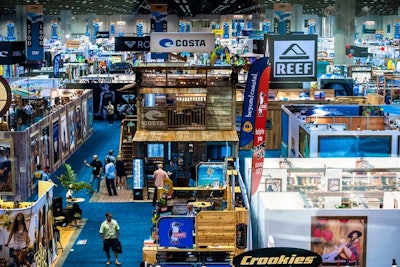
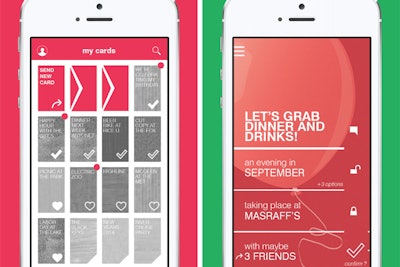
Fête launched its free iOS and Android apps in September. The foundation of the app is what it calls “invitation cards.” Hosts create the card, which can include event details like time and location, or it can be used to initiate a group chat to decide where and when to hold the event. The card can be sent to anyone in the host’s contact list. Guests don’t need to have the app to participate in the chat or respond to an invitation; instead they can do it via text.
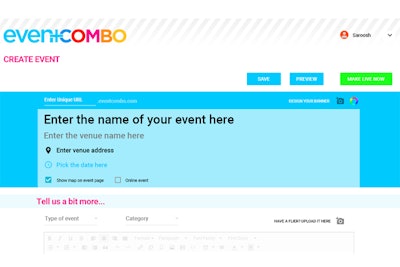
EventCombo is a ticketing system that allows hosts to bundle event tickets with other things attendees may want to purchase, such as meals from nearby restaurants, parking, merchandise, and more. Merchants use the system to create and manage the deals they want to offer, and the system matches those deals with relevant events. Organizers receive a portion of the money generated by the sale of those items. Events that use the system are also listed on the EventCombo website and promoted through social media. The system launched June 6 and additional updates are planned for the next month.
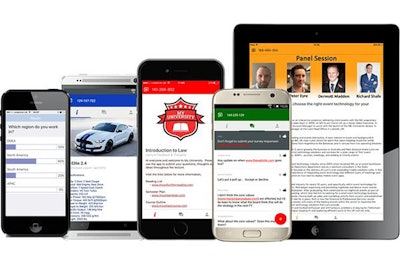
Meetoo, the real-time polling and messaging app from Lumi, released several updates in late May. Moderators can now disable the creation of participant profiles so audience members can use the app anonymously. The profile settings can be changed instantly so hosts can quickly adapt to changes in the mood or circumstance. Additional updates allow hosts to customize the app by adding instructions, speaker biographies, agendas, logos, photographs, and more.
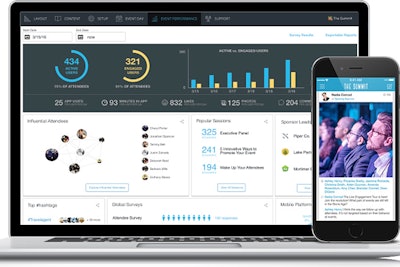
On June 9, DoubleDutch updated its Live Engagement Platform, which debuted in May as a system of applications that allow hosts to manage attendee participation, share sponsor and exhibitor communications, and analyze data. The new updates make it easy for hosts to manage dozens of events in one place, and to duplicate content from past events to save time. For attendees, the system can provide recommendations about sessions to attend and people to meet to personalize their event experience. It can also be used to streamline the scheduling of meetings with other attendees. The system tracks attendee behavior across the event so hosts can use that data to provide personalized follow-up.
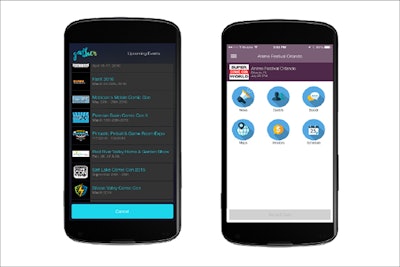
Planners can use Spingo’s new Event Master platform to manage a variety of aspects of their events. The system can handle ticketing, scheduling, interactive venue maps, exhibitor services, volunteer management, and analytics regarding customer acquisition and marketing. It can also be used to coordinate details for V.I.P.s, such as airport pick-ups, flight information, and expenses. Event Master also allows hosts to create a custom event app that attendees can use to purchase tickets, view schedules, and interact with other guests. The system debuted in February.
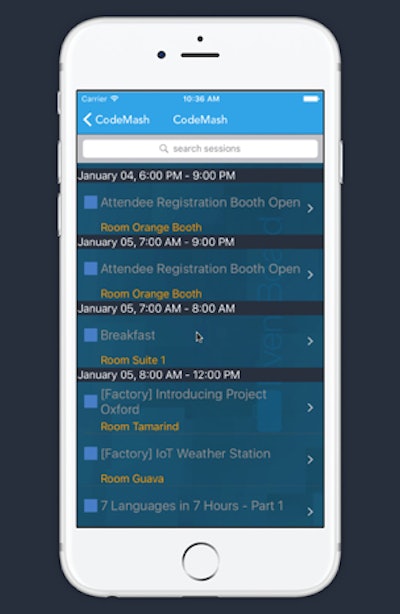
In January, EventsXD relaunched with a new business model that makes its multi-event app system free. The app can include digital floor plans, color-coded agendas, attendee communications, speaker information, surveys, social media integration, and digital materials. For additional fees, organizers can add premium features such as a sponsor showcase, push notifications, log-in codes, and more. EventsXD also has a new website feature that allows attendees to find and interact with events through their browser as well as the mobile app. Ticketing will be added to the system soon.
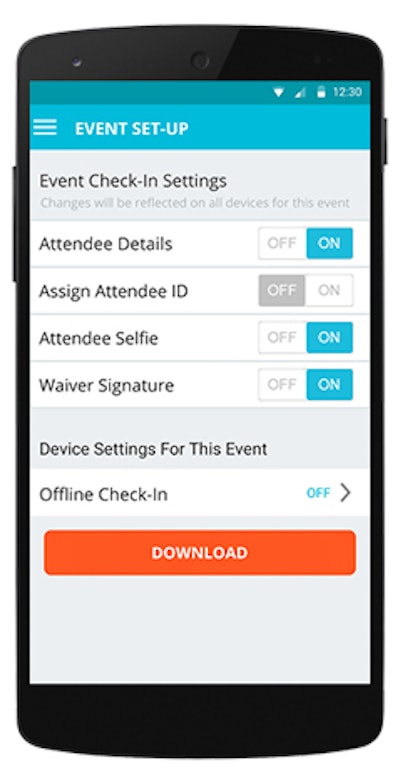
The new Event Assistant App from Events.com is intended to streamline the check-in process for hosts and attendees. In addition to a manual search by name, organizers can look up participants using voice recognition or by scanning a QR code; a quick “swipe right” then checks that person in to the event. Data refreshes in real-time and syncs across all devices to prevent duplicate check-ins. The app can also function in offline mode. Events.com launched the app in May. For now it’s only available for Android devices.
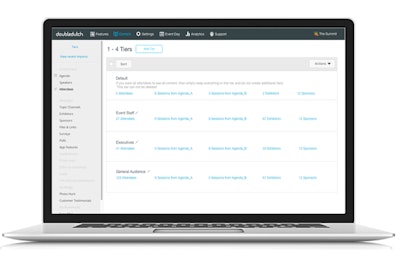
On Wednesday, DoubleDutch released four updates to its Live Engagement Platform. The new features are intended to help planners use content more effectively to improve the attendee experience. The new capabilities include an option for planners to personalize in-app content and its visibility to specific subsets of attendees. The revenue manager makes it easy for planners capture new revenue streams by offering exhibitors and sponsors a way to distribute content, promote live meetings, and maximize ROI. There’s also a feature to help attendees navigate complex agendas and identify topics of interest.
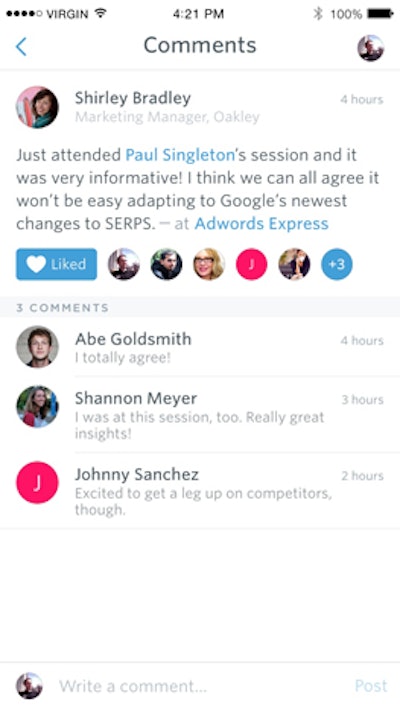
Interact is a feature that launched on Wednesday in all Guidebook app paid plans. Interact allows attendees, sponsors, and planners to connect using Facebook-like social engagement strategies. Users can tag people, tag sessions, and track likes and comments. Each session has a dedicated discussion tab so attendees can share their thoughts on speakers and topics. Sponsor posts, which can include images or links, are integrated into the feed to maximize sponsors’ visibility. Planners can also use the system to track attendee feedback and to provide updates to everyone or to individual attendees.
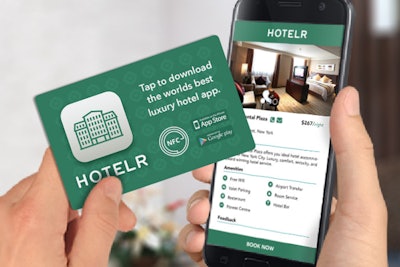
In early August, Tactify launched a new option for cloud-based interaction at events. Tappcards are like credit cards that come pre-programmed with content, such as a direct link to download an event app, exhibitor information, digital brochures, PDFs, and more. Users access the content by either tapping the card to an NFC-enabled phone, scanning the QR code on the card, or typing in a short URL. Planners can create a custom design on the card to reflect their event’s brand, and they have access to an online dashboard to track interactions and change content instantly.
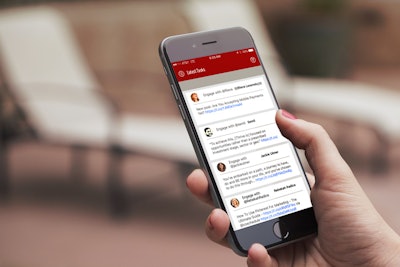
Meshfire uses artificial intelligence to help planners find influencers, conversations, and marketing opportunities around their events. Users create a set of goals known as a mission, tied to a Twitter handle. Meshfire filters conversations and prioritizes them in a task board. It can also create smart lists to add people automatically based on keywords. In late July, the company launched a mobile app so users can work on task boards and get alerts on the go.
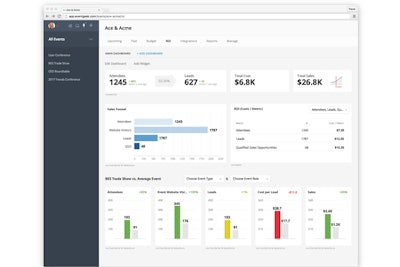
EventGeek is a new system to plan events and to track their success at driving sales, site traffic, social mentions, and more. Planners can use EventGeek to track everything related to event marketing in one place: budgets, expenses, itineraries, venues, guests, and sales. It’s integrated with other tools, such as Salesforce, Twitter, and Google Analytics, to make it easier for hosts to understand outcomes. The system also has a schedule feature that allows planners to put together a minute-by-minute agenda that can be printed, shared with a link, or sent to someone else’s calendar.
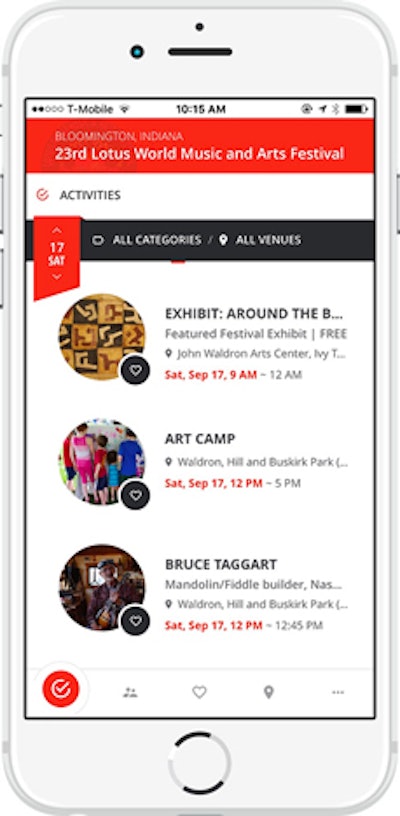
Rendezville is an app that launched in April, targeted to small-to-medium-size festivals, conferences, and events. The system operates as a Web app, meaning users don’t have to download it to their phones. Instead, they choose “add to home screen” and a link to the app will reside there. Planners can customize the look of the app so it matches their events. Content can include schedules, maps, bios, photos, and links to SoundCloud, YouTube, and social media. Organizers can test the interface for free, and only pay if they decide to publish.
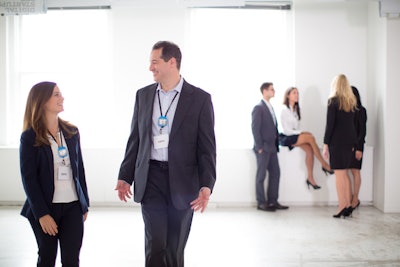
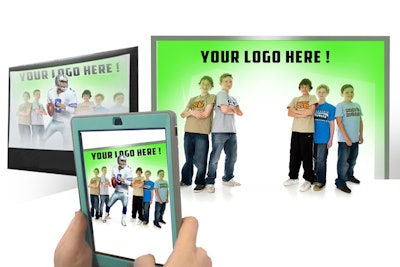
Create a virtual celebrity photo opportunity with Air Graffiti Dallas’s new augmented reality technology. The new system, which launches this summer, is intended for brands that are looking for ways to leverage their celebrity endorsement contracts. Air Graffiti Dallas shoots a brief video of the celebrity in advance, for example, walking into the shot, waving, or bouncing a ball. At the live event, fans stand in a designated photo area, and the video of the celebrity is virtually added to the image. Guests receive copies of the images, which can include sponsor branding, to share via email, text, or social media.

Photoboxx is a social media printing station for parties and events. When guests post their photos to Twitter or Instagram using a designated hashtag, the Photoboxx printer automatically prints a hard copy. Hosts can customize the background color of the prints and also add graphics or logos. They can also choose whether to display or hide information such as username, profile image, and comments. After the event, Photoboxx provides a report on hashtag usage, impressions, and reach.

The SloMo Lounge from Air Graffiti Dallas turns four seconds of video into a 30-second slow-motion playback. The system uses a high-speed, high-definition camera to record guests interacting with one another and with quirky props so the playback can reveal funny facial expressions. Guests receive a copy of the video, and they can select stills from it to print on site; all the content is shareable via email, text message, or social media. The activation can be set up in a 10- by 10-foot area and can be done with a plain white, black, or green screen backdrop.
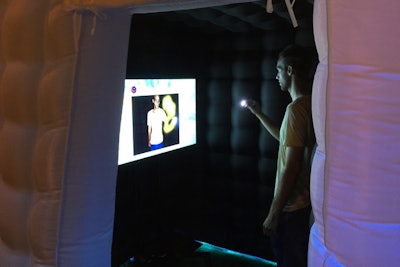
Add a splash of bright colors to event photos with the Neon Video Booth from Foto Master. Guests stand in front of a dark backdrop and use an LED spray can or pen to create virtual doodles. A camera in front of the guests uses an algorithm to detect and track the LED light. The resulting image of guests and their artwork can be saved as a video or turned into photos, GIFs, or flip books, all with brand logos and messages. Hosts can choose the color and size of the neon pen.
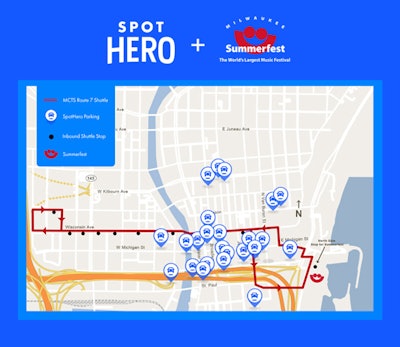
In mid-September, SpotHero launched a new service to help planners provide parking for their guests. SpotHero for Events allows guests to find and reserve parking in advance through a mobile app and website. The system operates in real time to reflect street closures and construction. Planners can embed the custom parking landing page on their event’s website and in emails and other communication materials so guests can reserve a spot with one click. The system is currently available in 15 cities across the United States, including Chicago, Los Angeles, New York, and Washington, D.C.

Jitjatjo is an app to facilitate on-demand temporary staffing for venues, caterers, events, and more. When a user requests staffing, the app handles the entire process from hiring through payroll. Requests can be made as late as an hour before a scheduled shift, for examples to replace people who have called in sick or simply don’t show up. The app analyzes requests and selects talent based on their experience, location, skills, availability, history, and ratings. Users can also request specific attire, include details regarding an assignment, and send messages in the app without having to share their contact information. Jitjatjo launched October 18. Currently, the service is only available in New York, but the company is making plans to expand to other cities.
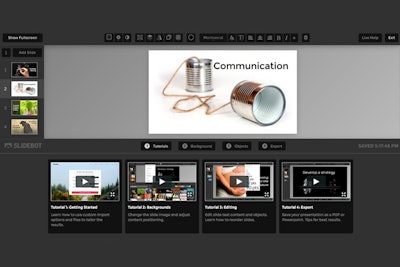
SlideBot is a tool to help people create engaging presentations. Users either type content directly in SlideBot or import an existing PowerPoint or Word file. The system uses “natural language processing” to understand the presentation’s content and then searches its database of more than 25 million images to find those that are most appropriate. After identifying images, SlideBot uses thousands of design rules to place the text on the images. Users can also choose from more than 800 icons and symbols to customize the presentation. Users can present directly from SlideBot or they can export a fully editable version to Powerpoint. The system costs $19 per month or $179 per year.
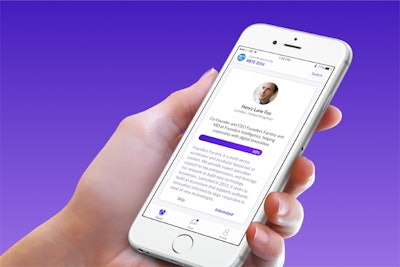
Grip is an app to facilitate networking at events. Similar to dating apps, Grip requires both parties to express an interest before connecting. Once two people both express an interest, that triggers a “handshake” in the app and the two people can then communicate through in-app messages to share ideas and arrange a meeting. Users can log in with their LinkedIn or Facebook accounts and also add a description about their interests. The system’s algorithm uses that data to recommends people to meet. Users can also join any of the more than 500 networking communities that exist within the app. In addition to the Grip app, the company also offers a white label version for events and planners can also integrate Grip’s API into their existing app or website.
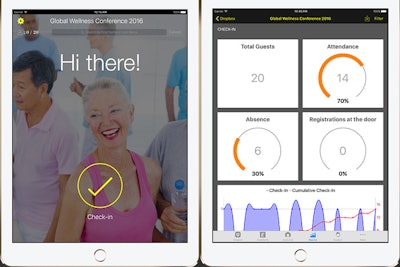
Guesto is a new app that launched in October that allows planners to check in guests and print name tags using an iPad and small label printer. Planners can create custom badges with their event’s logo, and import events and guest lists from Eventbrite or a simple spreadsheet. Guests can be identified for check-in either by searching for their name or by scanning a barcode or QR code.

Invite the Media is an online system to get journalists, bloggers, and influencers to an event. Planners fill out a form to indicate the date, time, location, and registration page of the event as well as details about the type of event (a conference, trade show, or fund-raiser, to name a few examples) and social media links and hashtags. The system then selects who in its database of more than 1 million media representatives in 150 countries would be suitable to receive the information. Reporters opt in to the media list so when an event matches their profile of interests it also triggers an invitation. The system sends reminder emails and provides tracking and metrics at the conclusion of each campaign. The company reports it has sent more than 450,000 invitations to date. Pricing ranges from $79 to $499.

Swoogo is a comprehensive planning system to manage an event’s website, registration, and marketing. Users choose a theme and drag-and-drop content widgets to create the event website. The system’s setup wizard can be used to create the registration form, designate registrant types, and add sessions. Pricing is based on how many people have access to create and edit events, ranging from $500 for one “full user,” to $2,000 for eight. All plans can be used for an unlimited number of events and registrations.
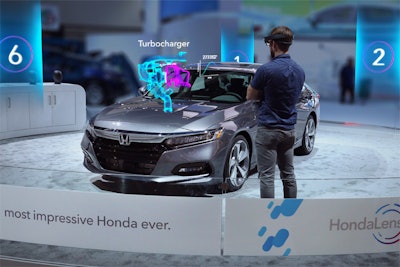
At the Los Angeles Auto Show in December, Honda worked with Spinifex Group and George P. Johnson to create an augmented-reality experience for visitors. As guests walked around the newest Honda Accord wearing a Microsoft Hololens headset, six stories about the vehicle appeared in their view. For example, standing outside the car a hologram version of the new turbocharged engine appeared to float out of the hood to show how it works. As guests sat in the driver’s seat, they experienced different traffic scenarios that were simulated through the windshield in front of them.
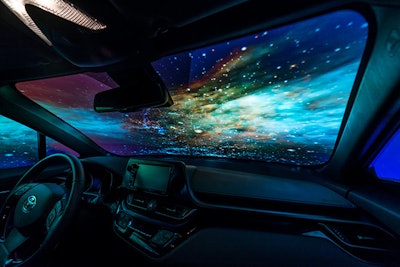
During Art Basel, which took place December 7 to 10 in Miami Beach, Toyota and its agency, Burrell, worked with Lightwave to create an emotion-technology experience to promote the new C-HR subcompact SUV. Before sitting in the car, guests were fitted with wristband heart monitors that tracked their emotional response as they were immersed in an audiovisual experience that included projection mapping on the vehicle’s windows. After they stepped out of the car, a line graph of their heart rate data was projected onto an eight-foot circular canvas, and painters from Lightwave Studio added brushstrokes to turn it into a custom piece of art.
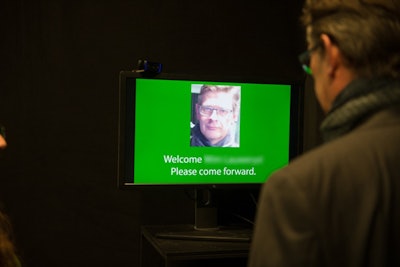
Facial recognition can now be used to streamline event check-in. The organizers of Belgian Roof Day, a trade show for the roofing industry held in Brussels, tested this technology from Zenus at its most recent event in November. About a week before the event, attendees received an email inviting them to upload a headshot to speed up check-in. At the event, those who chose to participate could use a separate “fast lane” that had a screen with a camera attached. When the system recognized the guest standing in front of the camera, the screen would turn green, display a personalized welcome message, and prompt them to pick up their badge at a nearby kiosk.
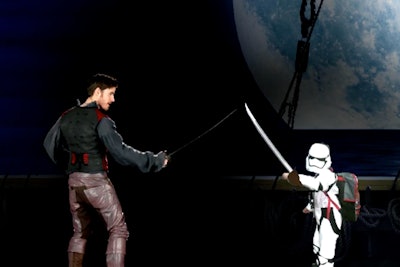
At Comic-Con International in San Diego in July, ABC used an interactive hologram of Captain Hook in its exhibit space to promote Once Upon a Time. The hologram, created by VNTANA, would speak to attendees about the upcoming season and then invite guests to engage in a sword fight.

At the Sundance Film Festival in January, presenting sponsor Acura gave guests a personalized driving experience using virtual reality and brain wave technology. Guests sat inside a spherical motion simulator equipped with a performance driver’s seat and 30 biometric sensors that measured things such as their brainwaves, heartbeat, and facial expressions. Then the scene that unfolded for 90 seconds on the screen in front of them changed based on their inputs, affecting speed, acceleration, colors, sound, and more. Each participant received a shareable picture that showed them during the experience along with a graphical presentation of their mood. The Moods Roads experience reached 2.5 million people through social sharing. Acura’s Sundance experience was created by George P. Johnson, Spinifex Group, GMUNK, Tool of North America, and MullenLowe.

To promote the release of Naked Juice’s Naked Pressed juice, the brand used a solar-powered vehicle that drove from New York to the Santa Monica Pier in March, with a stop in between for five days at South by Southwest in Austin. The truck, created by Future Colossal in partnership with Ignition Factory, had an automatic juice dispenser and a 10-foot interactive display that was used for a multi-player game with consumers at the stops at SXSW and Santa Monica. Using gesture tracking and wireless tablets, the game pitted three players against each other to capture and juice falling produce. At the end of each game the truck automatically dispensed bottles of juice. The solar array powered the game and also doubled as an awning to shield players from sun and rain.
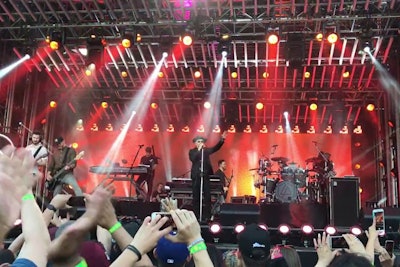
In May, Linkin Park played a free show on the backlot stage at Jimmy Kimmel Live in Los Angeles. The show was free and not ticketed, but the band wanted a way to connect with those who attended after the performance. To do that, it worked with Ampsy, which provides hyper-local social content aggregation, visualization, and analytics. Ampsy used social geofencing to discover posts on social media from people at the concert so the band could thank fans directly and offer them merchandise and other perks.

At the North American International Auto Show in Detroit in January, Ford created a virtual-reality experience to help consumers see how the brand is committed to the “Future of Mobility.” Twelve guests at a time sat in the chairs and donned headsets, which made it feel as if a giant drone was lifting them in the air and flying them around a futuristic city. During the flight, the drone would pause to hover over certain scenes to provide more in-depth information about Ford’s mobility vision. Examples of the content in the experience included two friends using their FordPass app, a driver parking using pre-booking and autonomous vehicle technology, and a demonstration of what cars look like when you don’t need to hold a steering wheel. The flight also included some moments just for fun, such as diving down the side of a skyscraper and zooming down city streets. According to Imagination, which created the VR experience, 9,400 riders participated.
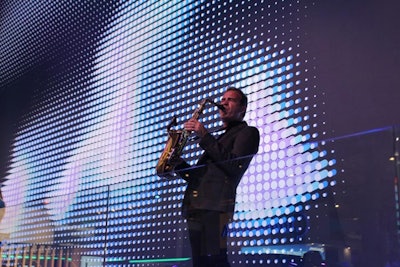
At Mobile World Congress in Barcelona in late February and early March, a massive wall of digital pin art served as the backdrop for Intel’s exhibit booth to provide an eye-catching example of the hyper-connectivity that will be available with 5G, the next generation of wireless technology that’s set to be available in 2020. Dubbed Wonderwall and designed by 2LK and Moving Brands, the 1,248-square-foot high-density LED panel reacted to what was taking place nearby, changing pin sizes, colors, angles, density, and more based on the movement and sounds coming from people in front of it. “It had moments when it was very active and it had moments which were really quiet, when you might mistake it for an inert, physical wall. It was that modulation between those modes which we were hoping would make people interested in the space,” said Glen Yeoh, motion design director at Moving Brands.

At Super Bowl LI in January, the Houston Host Committee gave fans the chance to take a virtual trip to Mars. Future Flight was a 90-foot drop tower that used virtual reality and audio to make riders feel as if they were traveling to Mars, landing on the planet with a few seconds to look around, and then dropping back down to earth and landing on the 50-yard line of a fan-filled NRG Stadium just in time for kickoff. The ride was designed by IDEAS, an Orlando-based experience design agency, and created in partnership with NASA, GES, ImaginNow, Exline Design and Architecture, and A.R.M. Houston is the home of the NASA Johnson Space Center and NASA has a goal of getting to Mars by 2030.
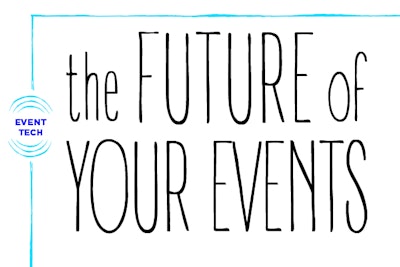
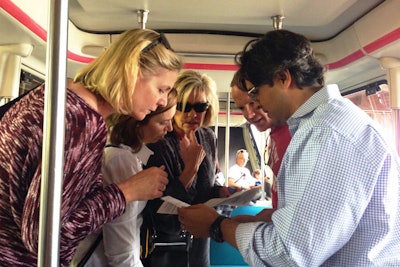
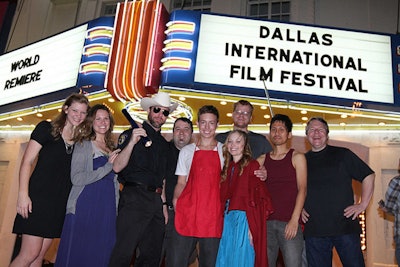

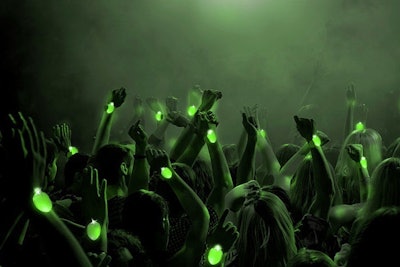

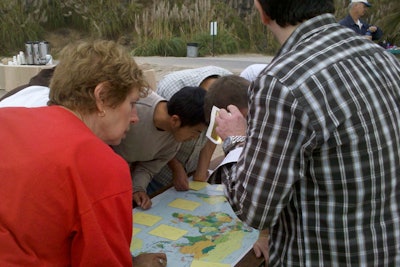
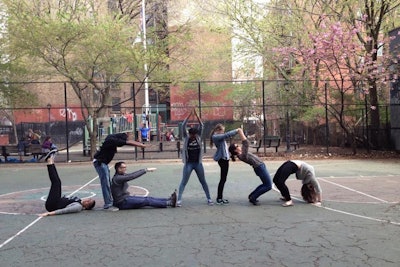
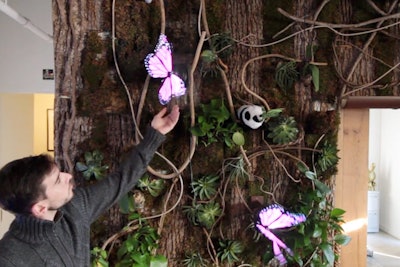
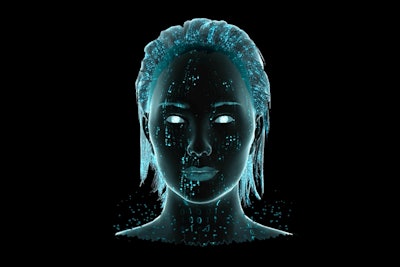

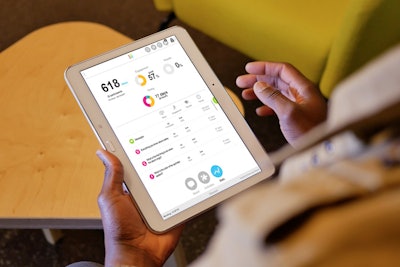
Klaxoon provides a variety of tools to facilitate information-sharing and collaboration at events. Planners can use the system to launch surveys, ask questions, create games, and prompt brainstorming. The system provides real-time results, so planners can track if attendees need clarification on content. The company is based in France, and expanded to the United States in June.
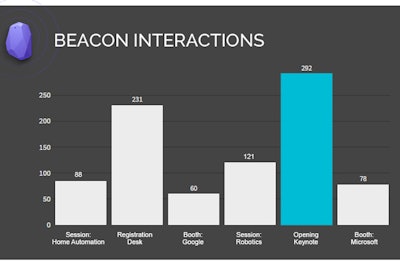
Beep is a beacon-enabled mobile app and attendee analytics platform. The system uses Bluetooth low-energy beacons to track attendee movement and dwell time, for example as they visit an exhibitor booth or attend a keynote session. Beep can also be used to send your guests location-based alerts and content, such as coupons, case studies, and website URLs, and can be set to trigger this content when they are anywhere from five to 230 feet from a beacon. Planners can access their event data in real-time from a Web-based dashboard.

Photo Butler is a new, free photo-sharing app for events. Hosts create a private album in the app and then invite guests to view and contribute their images. Those that choose to participate have all of their photos automatically added to the stream, without the need to text, upload, or email. The app’s algorithm pulls the best photos together into a highlight album.

Asembl is a new, free event discovery and promotion app. Planners create their event in the app, tag it with descriptive attributes (such as art and theater, fitness, music, etc.) and indicate the cost to attend and the target age group and gender. Users can then filter events based on attributes as well as by what their friends are attending. Events are displayed on a map so users can also search for events within a certain distance.
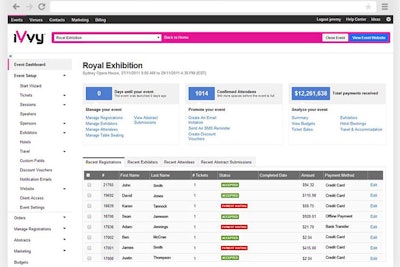
Ivvy is an event management system for venues and meeting planners. Based in Australia, the company has thousands of users in 13 countries, and this summer launched in North America. The system provides tools for planners to create custom websites, manage registration, coordinate hotel and airline bookings, coordinate speakers and sponsors, accept payments, and more. The venue capabilities allow planners to search, compare, and book event space, catering, and group accommodations by reviewing real-time availability, rates, and inventory. The venue component is available now in North America, and the planning tools will be available in the near future.
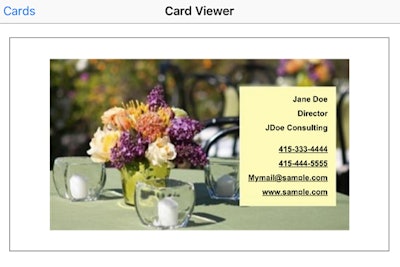
MoveShake is an app that allows users to design, create, share, and store virtual business cards. The cards are interactive, so clicking on the phone number in the image launches the phone’s dialer and clicking on the email launches the phone’s email client. Contacts be exported to a phone’s contacts and synced to the cloud or other applications. At events, presenters can give attendees their MoveShake ID so they can enter it in the app to immediately get their digital business card. Planners can also use the preload the app with cards from their sponsors, so those are immediately available to all attendees. And the app can be used to create digital badges to manage check-in.

